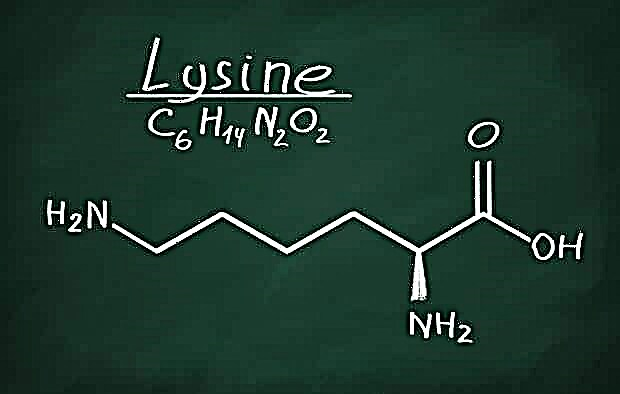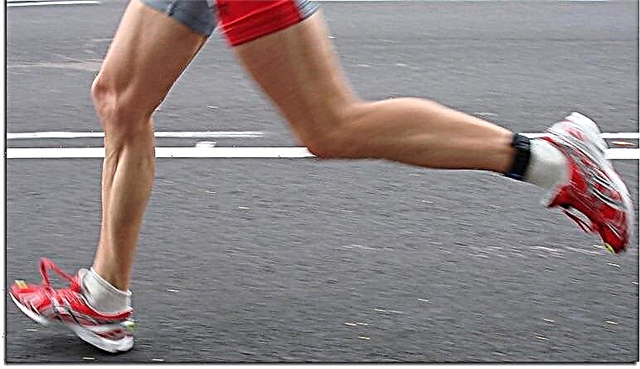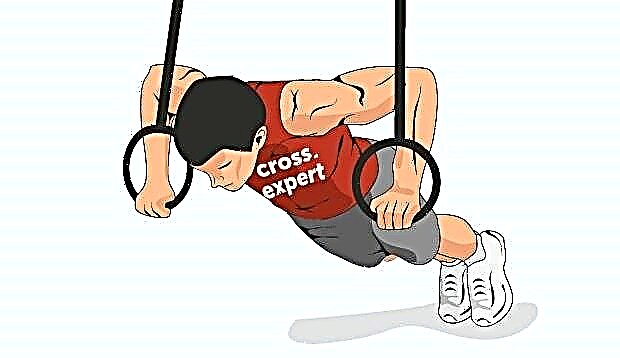The concept of a hand joint includes the wrist, mid-carpal, intercarpal and carpometacarpal joints. Dislocation of the hand (according to ICD-10 code - S63) implies a dislocation of the wrist joint, which is damaged more often than others and is dangerous by damage to the median nerve and tendon jumper. This is a complex connection formed by the articular surfaces of the bones of the forearm and hand.
The proximal part is represented by the articular surfaces of the radius and ulna. The distal part is formed by the surfaces of the wrist bones of the first row: scaphoid, lunate, triangular and pisiform. The most common injury is dislocation, in which there is a displacement of the articular surfaces relative to each other. The predisposing factor of trauma is the high mobility of the hand, which leads to its instability and high susceptibility to injury.
The reasons
In the etiology of dislocation, the leading role belongs to falls and blows:
- The fall:
- on outstretched arms;
- while playing volleyball, football and basketball;
- while skiing (skating, skiing).
- Lessons:
- contact sports (sambo, aikido, boxing);
- weightlifting.
- History of wrist injury (weak point).
- Road traffic accidents.
- Occupational injuries (fall of a cyclist).

© Africa Studio - stock.adobe.com
Symptoms
The main signs of dislocation after injury include:
- the occurrence of sharp pain;
- development of severe edema within 5 minutes;
- feeling of numbness or hyperesthesia on palpation, as well as tingling in the area of innervation of the median nerve;
- a change in the shape of the hand with the appearance of protrusion in the area of the joint bags;
- limitation of the range of motion of the hand and soreness when trying to make them;
- decrease in the strength of the flexors of the hand.
How to distinguish dislocation from bruise and fracture
| Type of damage to the hand | Features |
| Dislocation | Partial or complete limitation of mobility. It is difficult to bend the fingers. Pain syndrome is expressed. There are no signs of a fracture on the radiograph. |
| Injury | Characterized by edema and hyperemia (redness) of the skin. No mobility impairment. Pain is less pronounced than with dislocation and fracture. |
| Fracture | Expressed edema and pain syndrome against the background of almost complete limitation of mobility. Sometimes a crunching sensation (crepitus) is possible when moving. Characteristic changes on the roentgenogram. |
First aid
If a dislocation is suspected, it is necessary to immobilize the injured hand by giving it an elevated position (it is recommended to provide support with the help of an improvised splint, the role of which can be played by a regular pillow) and using a local ice bag (ice must be used within the first 24 hours after injury, applying for 15 -20 minutes to the affected area).
When applying a homemade splint, its leading edge should protrude beyond the elbow and in front of the toes. It is advisable to put a bulky soft object (a lump of cloth, cotton wool or bandage) into the brush. Ideally, the injured arm should be above the level of the heart. If necessary, the administration of NSAIDs (Paracetamol, Diclofenac, Ibuprofen, Naproxen) is indicated.

In the future, the victim should be taken to a hospital for consultation with a traumatologist. If more than 5 days have passed since the injury, the dislocation is called chronic.
Kinds
Depending on the location of the injury, dislocation is distinguished:
- scaphoid bone (rarely diagnosed);
- lunate bone (common);
- metacarpal bones (mainly the thumb; rare);
- hand with displacement of all bones of the wrist below the lunate, to the back, except for the last. Such a dislocation is called perilunar. It is relatively common.
Lunar and perilunar dislocations occur in 90% of diagnosed hand dislocations.
Transradicular, as well as true dislocations - dorsal and palmar, caused by the displacement of the upper row of the wrist bones relative to the articular surface of the radius - are extremely rare.
By the degree of displacement, dislocations are verified for:
- complete with complete separation of the bones of the joint;
- incomplete or subluxation - if the articular surfaces continue to touch.
By the presence of concomitant pathologies, dislocation can be normal or combined, with intact / damaged skin - closed / open.
If dislocations tend to recur more than 2 times a year, they are called habitual. Their danger lies in the gradual hardening of the cartilage tissue with the development of arthrosis.
Diagnostics
The diagnosis is made on the basis of the patient's complaints, anamnestic data (indicating the injury), the results of an objective examination with an assessment of the dynamics of the evolution of clinical symptoms, as well as X-ray examination in two or three projections.
According to the protocol adopted by traumatologists, radiography is performed twice: before the start of treatment and after the results of reduction.
According to statistics, lateral projections are the most informative.
The disadvantage of X-ray is to identify a bone fracture or ligament rupture. To clarify the diagnosis, MRI (magnetic resonance imaging) is used to detect bone fractures, blood clots, ligament ruptures, foci of necrosis and osteoporosis. If MRI cannot be used, CT or ultrasound is used, which are less accurate.

© DragonImages - stock.adobe.com
Treatment
Depending on the type and severity, the reduction can be carried out under local, conductive anesthesia or anesthesia (to relax the muscles of the arm). In children under 5 years of age, the reduction is always carried out under anesthesia.
Closed reduction of dislocation
An isolated wrist dislocation is easily repositionable by an orthopedic surgeon. The algorithm of actions is as follows:
- The wrist joint is stretched by pulling the forearm and arm in opposite directions, and then set.
- After reduction, if necessary, a control X-ray is taken, after which a plaster fixation bandage is applied to the injury area (from the fingers of the hand to the elbow), the hand is set at an angle of 40 °.
- After 14 days, the bandage is removed by moving the hand to a neutral position; if re-examination reveals instability in the joint, special fixation with Kirschner wires is performed.
- The brush is fixed again with a plaster cast for 2 weeks.
Successful hand reduction is usually accompanied by a characteristic click. In order to prevent possible compression of the median nerve, it is recommended to periodically check the sensitivity of the fingers of the plaster cast.
Conservative
With a successful closed reduction, conservative treatment is started, which includes:
- Drug therapy:
- NSAIDs;
- opioids (if the effect of NSAIDs is insufficient):
- short action;
- prolonged action;
- muscle relaxants of central action (Mydocalm, Sirdalud; the maximum effect can be achieved when combined with ERT).
- FZT + exercise therapy for the injured hand:
- therapeutic massage of soft tissues;
- micromassage using ultrasound;
- orthopedic fixation using rigid, elastic or combined orthoses;
- thermotherapy (cold or heat, depending on the stage of the injury);
- physical exercises aimed at stretching and increasing the strength of the muscles of the hand.
- Interventional (analgesic) therapy (glucocorticoid drugs and anesthetics, for example, Cortisone and Lidocaine, are injected into the affected joint).
Surgical
Surgical treatment is used when closed reduction is impossible due to the complexity of the damage and the presence of accompanying complications:
- with extensive skin damage;
- ruptures of ligaments and tendons;
- damage to the radial and / or ulnar artery;
- compression of the median nerve;
- combined dislocations with splinter fractures of the forearm bones;
- twisting of the scaphoid or lunate bone;
- old and habitual dislocations.
For example, if a patient has a trauma for more than 3 weeks, or the reduction was performed incorrectly, surgical treatment is indicated. In some cases, a distraction apparatus is installed. Reduction of the joints of the distal bones is often impossible, which is also the basis for surgical intervention. When signs of compression of the median nerve appear, emergency surgery is indicated. In this case, the fixation period can be 1-3 months. Having restored the anatomy of the hand, the orthopedist immobilizes the hand by applying a special plaster cast for up to 10 weeks.
Dislocations are often temporarily fixed with wires (rods or pins, screws and braces), which are also removed within 8-10 weeks after complete healing. The use of these devices is called metal synthesis.
Rehabilitation and exercise therapy
The recovery period includes:
- FZT;
- massage;
- medical gymnastics.

© Photographee.eu - stock.adobe.com. Working with a physiotherapist.
Such measures allow to normalize the work of the musculo-ligamentous apparatus of the hand. Exercise therapy is usually prescribed 6 weeks after the injury.
The main recommended exercises are:
- flexion-extension (the exercise resembles smooth movements (slow strokes) with a brush when parting);

- abduction-adduction (starting position - standing with your back to the wall, hands on the sides, palms on the side of the little fingers are close to the thighs; it is necessary to make movements with the brush in the frontal plane (in which the wall is located behind the back) either towards the little finger or towards the thumb of the hand );

- supination-pronation (movements represent turns of the hand according to the principle of "soup carried", "spilled soup");

- extension-convergence of fingers;

- squeezing the wrist expander;

- isometric exercises.

If necessary, exercises can be performed with weights.
Houses
FZT and exercise therapy are initially carried out on an outpatient basis and controlled by a specialist. After the patient becomes familiar with the full range of exercises and the correct technique for performing them, the doctor gives him permission to practice at home.
Of the medicines used are NSAIDs, ointments with an irritating effect (Fastum-gel), vitamins B12, B6, C.

Recovery time
The rehabilitation period depends on the type of dislocation. After a certain number of weeks:
- crescent - 10-14;
- perilunar - 16-20;
- scaphoid - 10-14.
Recovery in children is faster than in adults. The presence of diabetes mellitus increases the duration of rehabilitation.
Complications
According to the time of occurrence, complications are divided into:
- Early (occurs within the first 72 hours after injury):
- limitation of mobility of the articular joints;
- damage to nerves or blood vessels (damage to the median nerve is a serious complication);
- congestive edema of soft tissues;
- hematomas;
- deformation of the hand;
- feeling of numbness of the skin;
- hyperthermia.
- Late (develop 3 days after injury):
- accession of a secondary infection (abscesses and phlegmon of different localization, lymphadenitis);
- tunnel syndrome (persistent irritation of the median nerve with an artery or hypertrophied tendon);
- arthritis and arthrosis;
- ligament calcification;
- atrophy of the muscles of the forearm;
- violation of hand motility.
Complications of lunar dislocation are often arthritis, chronic pain syndrome, and wrist instability.
What is the danger of dislocation in children
The danger lies in the fact that children are not inclined to take care of their own safety, making a large number of movements, so their dislocations may recur. Often accompanied by bone fractures, which, if damaged again, can evolve into fractures. Parents need to take this into account.
Prevention
In order to prevent repeated dislocations, exercise therapy is indicated, aimed at strengthening the muscles of the hand and bone tissue. For this, foods rich in Ca and vitamin D are also prescribed. It is necessary to take measures to reduce the risk of falling, as well as to exclude practicing potentially traumatic sports (football, roller skating). Electrophoresis with lidase and magnetotherapy are effective measures to prevent the development of tunnel syndrome.









